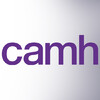
Physical Activity Intervention for Youth With Anxiety and Depression -Confident, Active and Happy...
AnxietyDepression2 morePrevalence of mental health problems and disorders in children and adolescents (hereafter youths) are estimated at 13.4% of which anxiety and depressive disorders account for more than half of these disorders. These rates are increasing, putting a large strain on child and adolescent mental healthcare services (CAMHS) to provide cost-effective treatments with documented long-term effects. However, even when provided the best evidence based treatment, between 40-50 % do not recover and continue to report significant symptom burdens. Thus, there is an immediate need for supplementary and/or new treatment approaches. Physical activity as a supplementary treatment may be one such approach. However, research investigating this approach within this population is scant. This protocol paper describes the development and feasibility trial of a physical activity based intervention targeting anxiety and depressive symptoms in youth. The current study will be based on the UK Medical Council Research Framework (MRC) for developing and evaluating complex interventions. The study will initially focus on the first two phases of the MRC framework. In line with phase one of this framework, key intervention components have been identified in preliminary work, which draw on the effects of moderate to vigorous physical activity, inhibitory learning theory and self determination theory. These components are to be developed into an intervention to be used in CAMHS. Twenty youths with anxiety and/or depressive symptoms will be recruited to the intervention. Physical activity will be measured using the Actigraph GT3X+ monitor at baseline and post-intervention. Outcome measures concerning symptom change will be assessed (anxiety and depression). Semi-structured qualitative interview with participants, caregivers and referring specialists will help identify possible contextual and practical factors associated with delivery of the intervention and explore acceptability of assessment procedures, the intervention, and perceived benefits and barriers to participation. This study will contribute to the development of evidence-based, patient-informed supplementary physical treatment interventions for youth with internalizing disorders in contact with CAMHS. The goal is to examine new avenues of treatment that ultimately may improve upon current treatment outcomes of these disorders.

A Study of Seltorexant as Adjunctive Therapy to Antidepressants in Adolescents With Major Depressive...
Depressive DisorderMajorThe purpose of this study is to assess the safety and tolerability of Seltorexant as adjunctive therapy to an antidepressant in adolescents with major depressive disorder (MDD) in the short-term compared with placebo.

rTMS for Depression in Young Adults With Autism
Autism Spectrum DisorderMajor Depressive DisorderThe current clinical trial is focused on evaluating the efficacy of rTMS for treatment of depression in youth and young adults (hereafter called transition aged youth, TAY) with autism spectrum disorder (ASD). The motivation to undertake the current efficacy study is driven by: (1) the substantial impact of depression on TAY with ASD (based on prevalence and contribution to disability/impairment); (2) lack of evidence-based treatments for depression in autism (there are no current trials rigorously evaluating any treatment for depression, i.e., psychotherapeutic, pharmacotherapeutic, brain stimulation); (3) rTMS has demonstrated efficacy in non-autistic individuals to improve symptoms of depression and may be better tolerated in youth than medication treatment; (4) a prior pilot rTMS study focused on treatment of executive function deficits in autism indicated that high frequency rTMS delivered using a rigorous randomized control trial (RCT) protocol can be feasibly implemented in TAY with autism, is well tolerated (mild to moderate adverse effects and low drop out), and has the potential to improve symptoms of depression.

Art Therapy Effectiveness in the Level of Anxiety and Depression of Cancer Patients
CancerHaving a diagnosis of cancer leaves a great emotional impact when it comes to strategies for coping with illness and life after illness. Participation in an art therapy program to forge and improve the emotional well-being is considered. Art therapy can be an effective intervention to help cancer patients lower their levels of anxiety and depression and in return improve their quality of life and their ability to cope with the disease.

Chronotherapy for Depressive Episodes
Depressive EpisodeEvidence-based treatments for depression, such as antidepressive medication, usually have a latency of 4 to 6 weeks before they achieve a therapeutic effect. Chronotherapy is a group of non-pharmacological interventions that presumably act on the circadian system to achieve a rapid-onset clinical effect and better long-term effects and has been shown efficient to improve depressive symptoms. Interventions include sleep deprivation, sleep-phase advancement and stabilization, and light therapy. There are few studies testing the effectiveness of combining these three chronotherapeutic techniques in the initial phase of treatment of depression in a secondary mental health care outpatient clinic. The investigators aim to test the effects and safety of chronotherapy in addition to TAU compared to TAU alone, with the primary outcome being self-reported depressive symptoms at 1 week following randomization. The study is a randomized controlled trial with 76 patients with a depressive episode who initiate outpatient treatment at Nidaros DPS, St. Olavs University Hospital. Participants will be allocated 1:1 to either chronotherapy + treatment as usual (TAU) or to TAU alone.

Reiki and Qi-gong Therapy to Improve Negative Emotional States of Anxiety, Depression, and Stress...
Type-2 Diabetic PatientsDiabetes is a worldwide chronic disease due to a disorder in the metabolism of blood glucose. It has high prevalence rates especially in developing countries and is associated with 1.5 million deaths per year. It showed increasing trends over the last few decades. This study aims to To evaluate and compare the effectiveness of Reiki and Qi-gong therapy techniques in improving diabetic patients' negative emotional states. This open-label randomized controlled trial. The study was conducted at the National Institute of Diabetes and Endocrinology's Hospital. The study sampling population consisted of all patients suffering from Type 2 diabetes attending the setting during the time of the study. randomized into two equal groups: one group will receive reiki intervention, and a second group will receive the qi-gong intervention. The researcher will use a self-administered questionnaire with a standardized tool (Depression Anxiety Stress Scales [DASS]) for assessment of depression, anxiety, and stress, along with a section for patients' demographic and health characteristics such as age, gender, marital status, duration of diabetes, treatment modalities, body mass index, and glycemic control.

Individualized Functional Connectivity Targeting in aiTBS for Depression
Depressive DisorderMajor4 moreThe goal of this clinical trial is to estimate the importance of neuroimaging in accelerated intermittent theta burst stimulation (aiTBS) for depression. Participants will receive aiTBS treatment, but they will not know if their treatment spot was found with neuroimaging or head measurements.

Amygdala Neurofeedback for Depression - Large Scale Clinical Trial
Major Depressive DisorderThe goal of this study is to evaluate whether rtfMRI-nf training to increase the amygdala response to positive memories may serve as a stand-alone intervention for major depressive disorder

FMRI-neurofeedback in Depression
DepressionUnipolarPrevious studies with fMRI-neurofeedback in depression have demonstrated a good safety profile and considerable symptom reduction. The goal of this clinical trial is to compare fMRI-neurofeedback plus standard care with standard care in patients with depression. Participants will either receive standard care, or standard care plus a fMRI neurofeedback training, consisting of 5 neurofeedback training sessions. Symptom severity will be assessed before, immediately after and 6 months after the intervention.

Optimizing Attentional Bias Modification
DepressionDepression has been associated with an attention bias towards negative information. Attention bias modification (ABM) interventions explore potential benefits of training attention away from negative or threatening information and towards neutral or positive information. The goal of this study is to examine the effectiveness of an ABM intervention that includes a preceding mindfulness training among a sample of individuals who self-reported mild-to-moderately depression symptoms. The main question this study aims to answer is: • Do individuals who participate in an ABM intervention have a greater reduction in attention bias towards negative information and depressive symptoms when compared to a control group? Participants will be asked to participate in 3 days of brief mindfulness training exercises preceding an ABM intervention session that lasts 1.5 to 2 hours while wearing electroencephalography (EEG) equipment. Researchers will compare the ABM intervention group to a "sham" intervention group to see if the ABM intervention reduces negative attention bias above and beyond brief mindfulness training.
